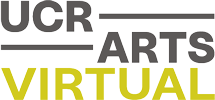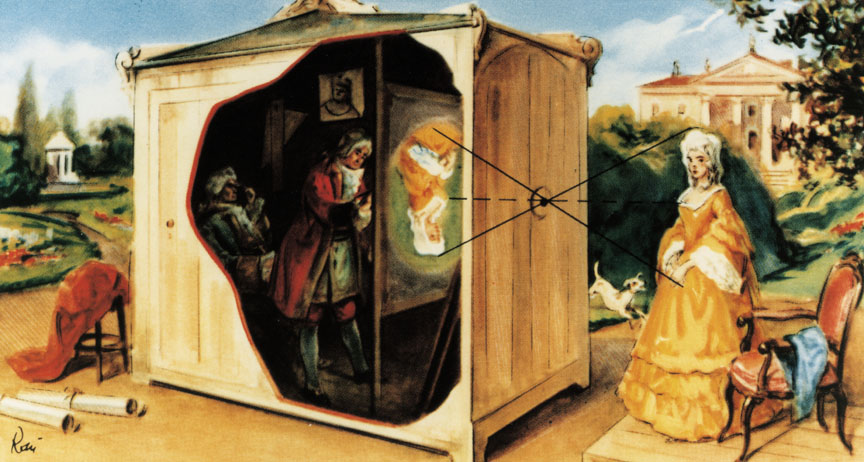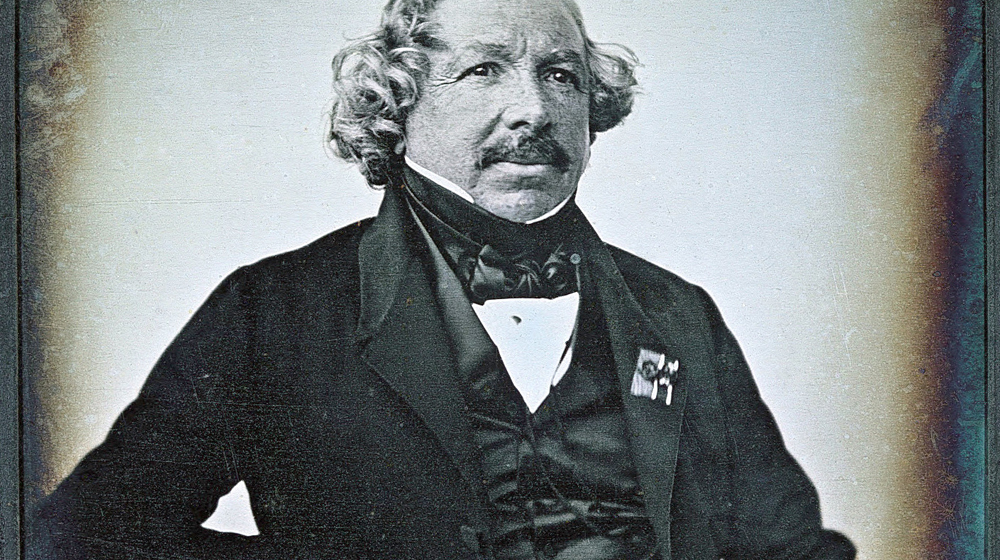There’s so much to learn about the history of photography through the California Museum of Photography and it’s collection of cameras and photographs. Today we’re going to learn about the camera obscura and you are going to create your own camera obscura!
Hay tanto que puedes aprender sobre la historia de la fotografía a través del Museo de la Fotografía de California y su colección de cámaras y fotografías antiguas. Hoy vamos a aprender sobre la cámara oscura ¡y vas a crear tu propia cámara oscura!
UCR ARTS for Kids: History of the Camera Obscura
Hi everyone! My name is Lindsey and I’m the Manager of School Programs at UCR ARTS. UCR ARTS is the California Museum of Photography and the Culver Center of the Arts.
There’s so much you can learn about the history of photography through the California Museum of Photography and it’s collection of old cameras and photographs. So I thought while we’re all at home, we can learn about the history of photography together! Today we’re going to learn about the camera obscura and you are going to create your own camera obscura! Let’s get started!
The camera obscura was the very first version of the cameras we use now. Camera obscura is Latin and means “dark room” and that is exactly what the first camera obscura was! The first version of the camera obscura was a completely dark room with a tiny hole in one wall. All the light from outside could only go through that tiny hole. The light would project a picture of the outside world on a white wall across from the hole. The picture or image would look exactly like what’s outside except it was flipped upside down and backwards!
Why did the image look like this? Light travels in a straight line, which means when it can only go through a small opening and is coming from different angles, it has to keep traveling straight and project on the surface right in front of it. This causes the image to appear upside down and backwards. Several different people discovered the camera obscura in different places and at different times!
The first record of someone discovering a camera obscura was a philosopher named Mo Ti in China in the 5thcentury B.C. He noticed that when light passed through a pinhole in a dark room, it made an inverted but exact image of an object outside the room.
In 4th Century B.C. a philosopher in Greece named Aristotle was outside during a solar eclipse and discovered that underneath a tree, he could see several crescent-shaped images of the sun projected on the ground. This was because the space between the leaves were acting as pinholes and the dark space under the tree acted as a dark room. This is a much safer way to view a solar eclipse because if you look at the sun it can hurt your eyes!
Lots of scientists, artists, inventors, geographers, and more used the camera obscura if they wanted to trace an image to draw and paint realistic pictures. You may be wondering, how did the camera obscura turn into a camera like the ones we use today? Later, inventors and scientists figured out how to capture the image in the camera obscura and turn it into a photograph!
The first permanent images that came from the camera obscura were actually created around the same time but two different ways and by two different people! William Henry Fox Talbot captured an image on paper using chemicals. Louis Daguerre captured an image on metal using chemicals called the daguerreotype. They used chemicals that we now know are dangerous, and, thankfully, photographers have safer ways to take photographs.
You can see a camera obscura room when you visit the California Museum of Photography at UCR ARTS. It is built into the building on the third floor! Until then, you can create a smaller camera obscura at home! Check out the next video to learn how to make your own.
UCR ARTS para niños: La historia de la cámara oscura
¡Hola! Mi nombre es Lindsey y soy la supervisora de los Programas Escolares de UCR ARTS. UCR ARTS es parte del Museo de la Fotografía de California y del Centro para las Artes Culver.
Hay tanto que puedes aprender sobre la historia de la fotografía a través del Museo de la Fotografía de California y su colección de cámaras y fotografías antiguas. Entonces pensé que mientras estamos todos en casa, ¡podemos aprender sobre la historia de la fotografía juntos! Hoy vamos a aprender sobre la cámara oscura ¡y vas a crear tu propia cámara oscura! ¡Comencemos!
La cámara oscura fue la primera versión de las cámaras que usamos hoy en día. Cámara oscura en latín significa “cuarto oscuro” ¡y eso es exactamente lo que era la primera la cámara oscura! La primera versión de la cámara oscura consistía en un cuarto completamente oscuro con un pequeño agujero en una de las paredes. Toda la luz externa podía pasar solamente a través de ese pequeño agujero. La luz proyectaría una imagen del mundo exterior sobre una pared blanca frente al agujero. La imagen se vería exactamente como lo que hay afuera con la excepción de que esta estaría ¡de cabeza y al revés!
¿Por qué se ve así la imagen? La luz viaja en línea recta, lo que significa que cuando sólo puede pasar por una pequeña abertura y viene desde diferentes ángulos, tiene que seguir viajando de manera recta y proyectarse sobre la superficie frente a ella. Esto produce que la imagen aparezca de cabeza y al revés. ¡Muchas personas diferentes descubrieron la cámara oscura en lugares diferentes y en momentos diferentes!
El primer registro que existe del descubrimiento de una cámara oscura fue el del filósofo llamado Mo Ti en China en el siglo V antes de Cristo. Él se dio cuenta de que cuando la luz pasaba a través de un agujero en un cuarto oscuro, producía una imagen exacta pero invertida de un objeto ubicado afuera del cuarto.
En el siglo IV antes de Cristo, un filósofo en Grecia llamado Aristóteles estaba afuera durante un eclipse de sol y descubrió que debajo un árbol podía ver varias imágenes del sol proyectadas sobre el suelo con forma de media luna. Esto debido a que el espacio entre las hojas actuaba como agujeros y que el espacio oscuro bajo el árbol actuaba como un cuarto oscuro. Esta es forma más segura de ver un eclipse de sol ya que si miras el sol directamente este ¡puede dañar tus ojos!
Muchos científicos, artistas, inventores, geógrafos y más, han usado la cámara oscura para trazar figuras para dibujar y pintar imágenes realistas.Te debes estar preguntando, ¿Cómo es que la cámara oscura se convierte en una cámara como las que usamos hoy en día? Más tarde, inventores y científicos descubrieron cómo capturar la imagen en la cámara oscura y ¡convertirla en una fotografía!
Las primeras imágenes permanentes que salieron de la cámara oscura fueron creadas más o menos al mismo tiempo, pero ¡de dos formas diferentes y por dos personas diferentes! William Henry Fox Talbot capturó una imagen sobre papel utilizando químicos. Louis Daguerre capturó una imagen sobre metal llamada daguerrotipo también utilizando químicos. Ambos utilizaron químicos que ahora sabemos son peligrosos, y, afortunadamente, los fotógrafos ahora tienen formas más seguras para tomar fotografías.
Tú puedes ver un cuarto de cámara oscura cuando visites el Museo de la Fotografía de California en UCR ARTS. ¡El cuarto está construido en el mismo edificio en el tercer piso! Mientras tanto, ¡puedes crear una pequeña cámara oscura en tu casa! Mira el siguiente video para aprender a crear la tuya.


